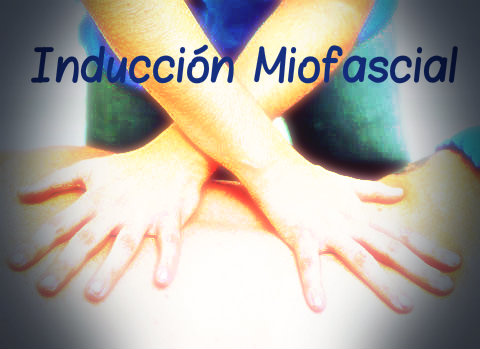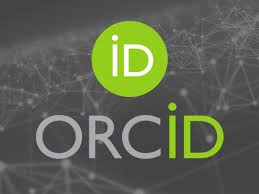Efectividad de la técnica de inducción miofascial vs. punción seca en puntos gatillos del síndrome doloroso cervical
Palabras clave:
síndromes del dolor miofascial, puntos disparadores, dolor de cuello.Resumen
Introducción: las personas adultas padecen de dolores en el cuello y la espalda que limitan su movilidad y les ocasionan trastornos personales y laborales. En Cuba se estima que más de la mitad de la población padece cervicalgia en algún momento de su vida.
Objetivo: determinar la eficacia de la técnica de punción seca de los puntos gatillo versus la inducción miofascial en el síndrome doloroso cervical de etiología miofascial.
Método: se realizó un estudio pre-experimental correlacional, después de aplicar los criterios de inclusión y exclusión, la muestra quedó conformada por 93 pacientes con diagnóstico de cervicalgia de etiología miofascial, al grupo control se les aplicó un protocolo que incluía la punción seca de los puntos gatillo y al grupo de intervención se les aplicó la inducción miofascial.
Resultados: el 59,1 % de la muestra fue del sexo femenino. La edad media de los participantes fue de 40,38 años. En cuanto al peso corporal, la media de la muestra se encontró en la valoración de sobrepeso, 25,4 % y la ocupación que predominó fueron aquellas labores clasificadas dentro del grupo labores no profesionales en un 43,2 %. Entre el grupo de intervención y el grupo control la diferencia entre el inicio y el final del tratamiento fue estadísticamente significativa.
Conclusiones: el tratamiento con el protocolo de inducción miofascial ha resultado ser prácticamente igual de eficaz que el protocolo de punción seca de los puntos gatillo, la mejoría del dolor fue más significativa en el grupo control y la reducción de la discapacidad fue más notable en el grupo de intervención.
Descargas
Citas
1. Rojas M, Gimeno D, Vargas Prada S, Benavides FG. Dolor musculoesquelético en trabajadores de América Central: resultados de la I encuesta Centroamericana de condiciones de trabajo y salud. Rev Panam Salud Pública [Internet]. 2015 [citado 21 Nov 2016]; 38(2): 120-8. Disponible en: http://iris.paho.org/xmlui/bitstream/handle/123456789/10046/v38n2a04.pdf.
2. Korthals de Bos IBC, Hoving JL, Van Tulder MW, Rutten van Molken MPMH, Ader HJ, de Vet HCW, et al. Cost effectiveness of physiotherapy, manual therapy, and general practitioner care for neck pain: economic evaluation alongside a randomised controlled trial. BMJ [Internet]. 2003 [citado 21 Nov 2016]; 326:911. Disponible en: http://www.bmj.com/content/326/7395/911.
3. González Gámez S, Rodríguez Labañino R, Caballero Ordúñez A, Selva Capdesuñer A. Eficacia terapéutica de la acupuntura en pacientes con sacrolumbalgia. MEDISAN [Internet]. 2011 Mar [citado 20 Nov 2016]; 15(3): 300-7. Disponible en: http://scielo.sld.cu/scielo.php?script=sci_arttext&pid=S1029-30192011000300005&lng=es.
4. González Moga A, Guzmán Carranza E, Álvarez Vázquez L, Huerta Hernández G, Galicia Luna V, Anaya Contreras VH, et al. Results of treatment of cervical discopathy with peek interbody cages at three levels without plate fixation. Coluna/Columna [Internet]. 2016 [citado 21 Nov 2016]; 15(2): 112-4. Disponible en: http://www.scielo.br/scielo.php?script=sci_arttext&pid=S1808-18512016000200112&lng=pt.
5. Gonzáles Pozas A, Ruiz Fernández MA. La rehabilitación en la espondiloartrosis. JANO [Internet]. 2004. [citado 21 Nov 2016]; LXVI (1504): 36-9. Disponible en: http://www.sld.cu/galerias/pdf/sitios/rehabilitacion-fis/agentes_y_espondiloartrosis.pdf.
6. Souza Aquaroli R, Soares Camacho E, Marchi L, Pimenta L. Manual therapy and segmental stabilization in the treatment of cervical radiculopathy. Fisioter mov [Internet]. 2016 [citado 21 Nov 2016]; 29(1): 45-52. Disponible en: http://www.scielo.br/scielo.php?script=sci_arttext&pid=S0103-51502016000100045.
7. Kovacs FM, Bagó J, Royuela A, Seco J, Giménez S, Muriel A, et al. Psychometric characteristics of the Spanish version of instruments to measure neck and pain disability. BMC Musculoskeletal Disorders [Internet]. 2015 [citado 21 Nov 2016]; 9:42. Disponible en: https://qmro.qmul.ac.uk/xmlui/bitstream/handle/123456789/18986/Kovacs%20Psychometric%20characteristics%20of%20the%20Spanish%20version%20of%20instruments%20to%20measure%20neck%20pain%20disability%202008%20Published.pdf?sequence=1.
8. Píriz H, Castromán P, Ayala S, Reta G, Ayala W. Acupuntura: efecto analgésico agudo en pacientes con dolor osteoarticular. Anest Analg Reanim [Internet]. 2013 [citado 24 Feb 2016]; 26(2): 5-5. Disponible en: http://www.scielo.edu.uy/scielo.php?script=sci_arttext&pid=S1688-12732013000200005&lng=es.
9. Silva Ayçaguer LC. El papel de los medios masivos de información en materia de salud. Rev Cubana Salud Pública [Internet]. 2012 [citado 24 Feb 2016]; 38(Supl 5): 759-70. Disponible en: http://www.scielosp.org/scielo.php?script=sci_arttext&pid=S0864-34662012000500009.
10. Alleyne T, Roaches S, Thomas C, Shirley A. The control of hypertension by use coconut water and mauby: two tropical food drinks. West Indian Med J [Internet]. 2015 [citado 16 Nov 2016]; 54(1):3-8. Disponible en:http://caribbean.scielo.org/scielo.php?script=sci_arttext&pid=S0043-31442005000100002&lng=en&nrm.
11. Langevin HM, Bouffard NA, Fox JR, Palmer BM, Wu J, Iatridis JC, et al. Fibroblast cytoskeletal remodeling contributes to connective tissue tension. J Cell Physiol [Internet]. 2011[citado 16 Nov 2016]; 226(5): 1166-75. Disponible en: http://www.ncbi.nlm.nih.gov/pmc/articles/PMC3053527/.
12. Ulloa M, Fernández M. Luxação unifacetária cervical: Um lado é suficiente. Rev Port Ortop Traum [Internet]. 2015 [citado 21 Nov 2016]; 23(1): 33-9. Disponible em: http://www.scielo.mec.pt/scielo.php?script=sci_arttext&pid=S1646-21222015000100004&lng=pt.
13. Guerreiro Da Silva AV, Uchiyama Nakamura M, Guerreiro Da Silva JB. ‘Forbidden points’ in pregnancy: do they exist? Acupunct Med [Internet]. 2015 [citado 21 Nov 2016]; 29(2): 135-6. Disponible en: http://aim.bmj.com/content/acupmed/29/2/135.full.pdf.
14. Rizzi Cintra ME, Gomes Pereira PP. Percepções de corpo identificadas entre pacientes e profissionais de medicina tradicional chinesa do Centro de Saúde Escola do Butantã. Saúde Soc. [Internet]. 2012 [citado 21 Nov 2016]; 21 (1): 193-205. Disponible en: http://www.scielo.br/pdf/sausoc/v21n1/19.pdf.
15. Vieira Gardin AM, Alves de Almeida Felipe F. Estudo comparativo entre dois protocolos de tratamento Flor de Liz e Método Canal Unitário em algias cervicais [Internet]. 2013 [citado 21 Nov 2016]; 14(4): 290-4. Disponible en: http://www.scielo.br/scielo.php?script=sci_arttext&pid=S1806-00132013000400011.
16. McEvoy J, Dommerholt J. Myofascial trigger points of the shoulder. En Donatelli RA (ed). Physical Therapy of the Shoulder. St Loius: Elsevier Churchill Livingstone; 2012. p. 351-80.
17. Saiz LLamosas JR, Fernández Pérez AM, Fajardo Rodríguez MF, Pilat A, Valenza Demet G, Fernández de las Peñas C. Changes in neck mobility and pressure pain threshold levels following a cervical myofascial induction technique in pain-free healthy subjects. J Manipul Physiol Ther. 2013; 32(5): 352-7.
18. García Franco M, Climent Barberá JM, Marimón Hoyos V, Garrido Arredondo AM, Pastor Saura G. Estudio comparativo de dos técnicas de infiltración miofascial en puntos gatillo: punción seca e inyección de anestésico local. Rehab Rev Soc Esp Rehab Med Fís. 2013; 40(4): 188-92.

Descargas
Publicado
Cómo citar
Número
Sección
Licencia
Avisos de derechos de autor propuestos por Creative Commons
1. Política propuesta para revistas que ofrecen acceso abierto
Aquellos autores/as que tengan publicaciones con esta revista, aceptan los términos siguientes:- Los autores/as conservarán sus derechos de autor y garantizarán a la revista el derecho de primera publicación de su obra, el cuál estará simultáneamente sujeto a la Licencia de reconocimiento de Creative Commons que permite a terceros compartir la obra siempre que se indique su autor y su primera publicación esta revista.
- Los autores/as podrán adoptar otros acuerdos de licencia no exclusiva de distribución de la versión de la obra publicada (p. ej.: depositarla en un archivo telemático institucional o publicarla en un volumen monográfico) siempre que se indique la publicación inicial en esta revista.
- Se permite y recomienda a los autores/as difundir su obra a través de Internet (p. ej.: en archivos telemáticos institucionales o en su página web) antes y durante el proceso de envío, lo cual puede producir intercambios interesantes y aumentar las citas de la obra publicada. (Véase El efecto del acceso abierto).







